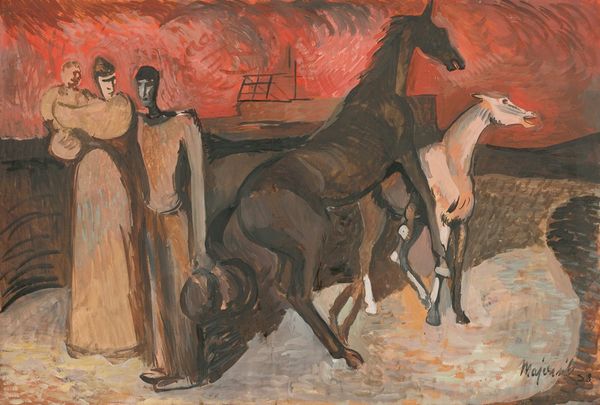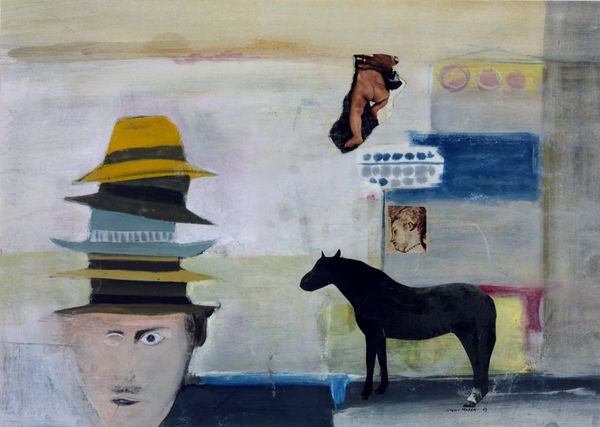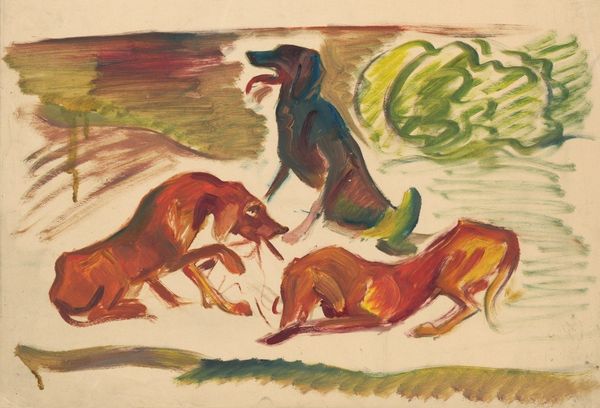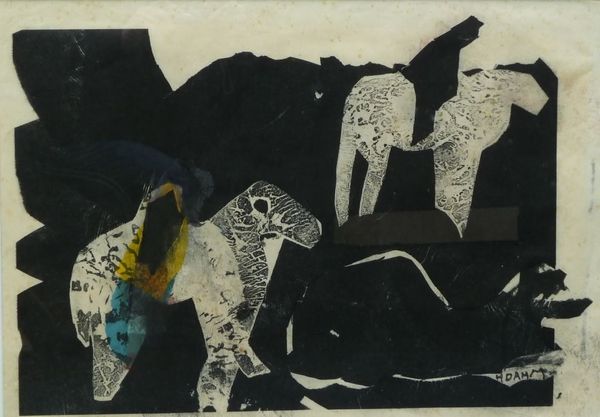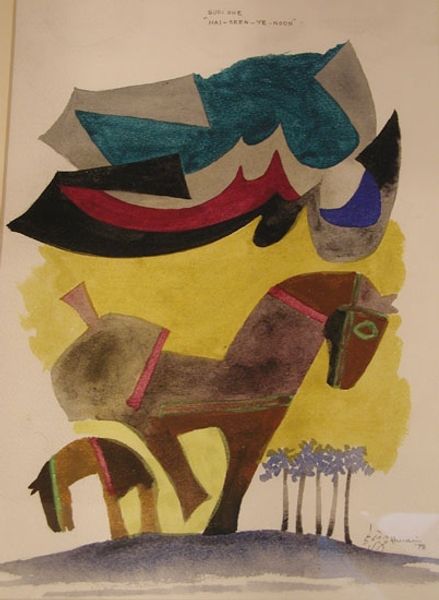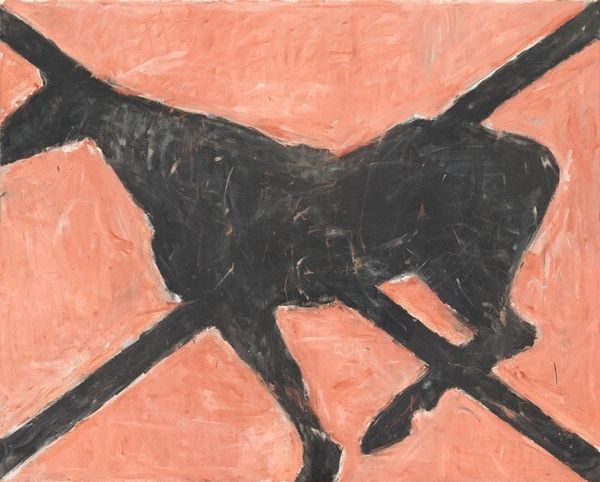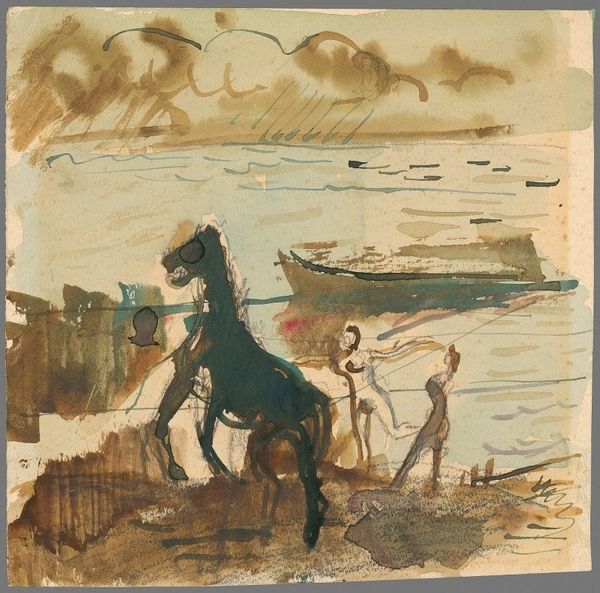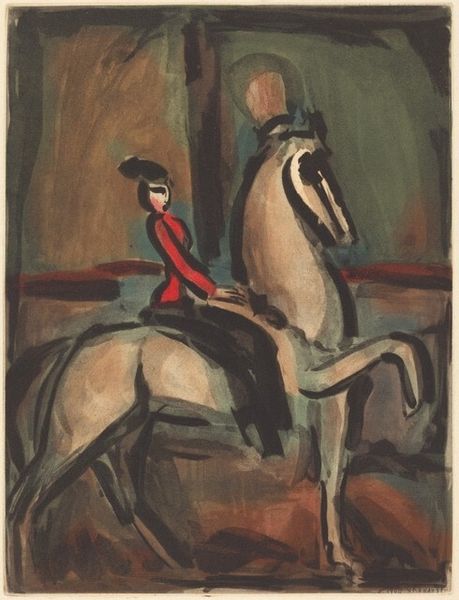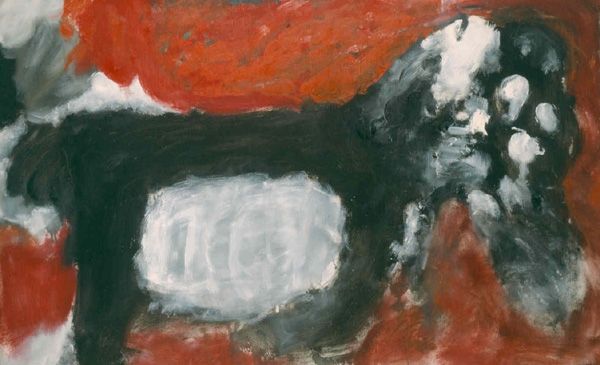
painting, watercolor
#
portrait
#
water colours
#
painting
#
landscape
#
figuration
#
oil painting
#
watercolor
#
intimism
#
line
#
symbolism
#
watercolor
Copyright: Public Domain: Artvee
Editor: Here we have Lèon Spilliaert's "Femme au Lévrier," created in 1917. It’s a watercolor piece. The starkness of the woman and dog against the washed-out background creates a sense of isolation. What strikes you most about this work? Curator: I'm intrigued by the psychological tension Spilliaert creates. Consider the historical context: 1917, during the first World War. The stark simplicity, the almost spectral figures... to me, this speaks to a collective sense of loss and anxiety that pervaded society at the time. Editor: I see that. It’s like they’re ghosts in their own world. But the woman seems so detached. Curator: Precisely. Consider the role of women during wartime, often left to maintain the home front while facing immense personal grief and uncertainty. Is she a symbol for grief and isolation? Also, notice how the dog seems both protective and vulnerable, an analogy to those left behind, trying to safeguard a fragile existence? The greyhound, a breed historically associated with nobility, almost hints at societal decay as war strips away established hierarchies. Editor: That makes me look at it differently. It’s not just a woman and a dog; it's a representation of an entire era and the feelings within it. Curator: Exactly. The personal becomes political, even in what seems like a quiet, intimate scene. This watercolor is a profound statement. Do you notice the almost careless washes of the watercolour which also create depth? Editor: Now that you mention the socio-historical elements I see them. Thank you for your insights! Curator: My pleasure. Hopefully we can view more work by Spilliaert!
Comments
No comments
Be the first to comment and join the conversation on the ultimate creative platform.

